Nature is full of stunning creatures that dazzle with their vibrant colors and graceful forms. But lurking in the corners of the animal kingdom are some truly peculiar species that might not win any beauty contests. Their strange appearances, however, often make them endearing in a unique way. Whether it’s their unusual features or their quirky behaviors, these animals invite us to see beauty in the bizarre. Let’s embark on a journey to meet 12 of the ugliest animals on Earth, whose looks are so eccentric, they’re almost cute.
1. The Blobfish: A Face Only a Mother Could Love
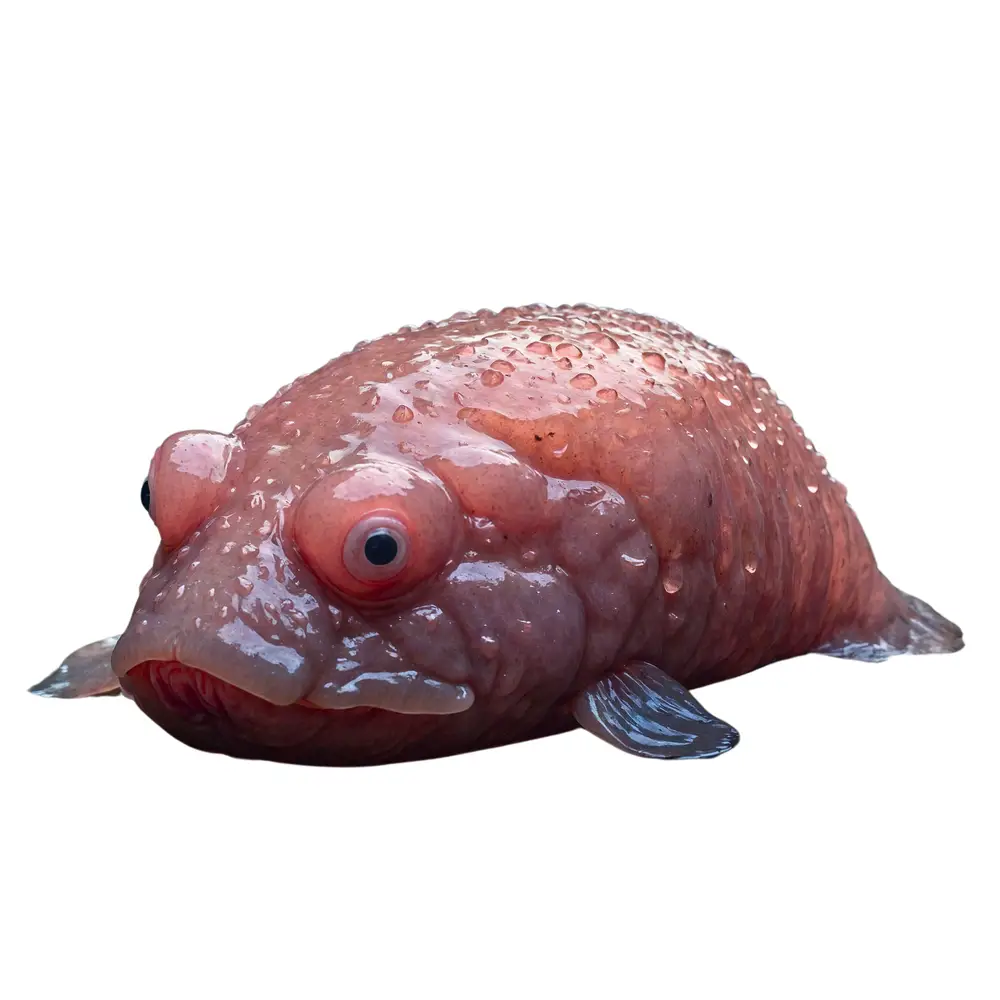
The blobfish is often cited as one of the planet’s most unattractive creatures. This deep-sea dweller, native to the waters off the coasts of Australia and New Zealand, has a gelatinous, droopy appearance that makes it look perpetually sad. According to National Geographic, its unflattering look is due to the lack of muscle in its body, making it perfectly adapted to its high-pressure environment. When brought to the surface, the blobfish’s body decompresses, giving it that infamous blobby look that has earned it the title of the “world’s ugliest animal.”
Despite its unappealing appearance, the blobfish has become a bit of a cult hero online. Its unique looks have inspired plush toys, memes, and even a dedicated fan club, proving that beauty truly is in the eye of the beholder. The blobfish’s notoriety has also brought attention to the challenges of deep-sea conservation. This squishy swimmer reminds us that the ocean is full of creatures that defy our conventional standards of beauty, yet play vital roles in their ecosystems.
2. The Aye-Aye: Madagascar’s Curious Nighttime Critter
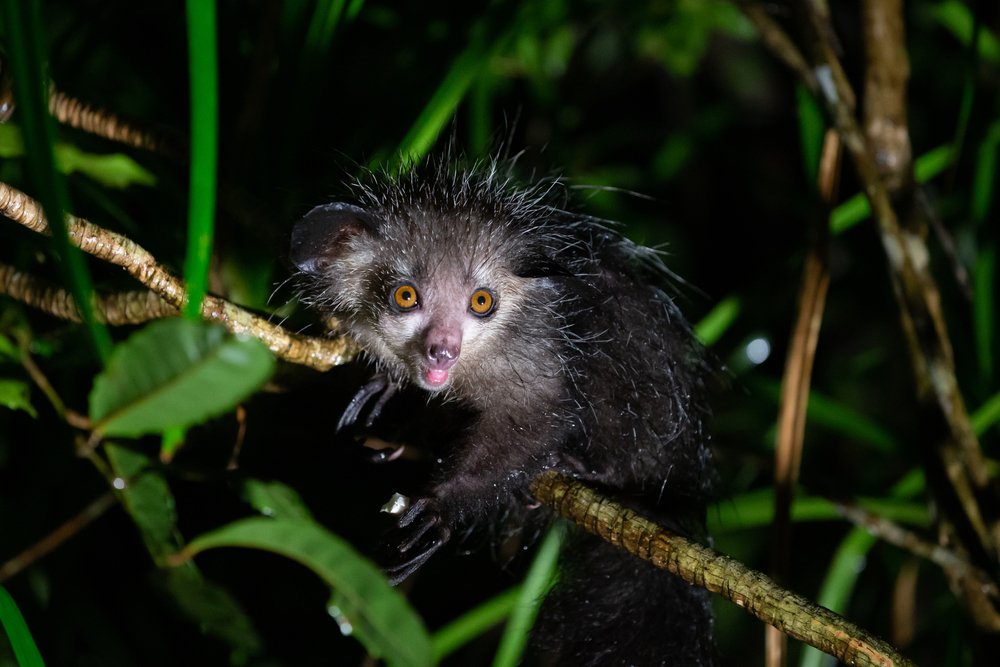
The aye-aye, a nocturnal primate from Madagascar, is often described as having a face only a mother could love according to the World Wildlife Fund. With oversized ears, bulging eyes, and skeletal fingers, it looks like a creature from a fantasy novel. This unusual appearance helps the aye-aye survive in its environment; its elongated middle finger is used to tap on tree trunks and locate larvae, a process known as percussive foraging. The aye-aye’s peculiar traits have unfortunately made it the target of superstition and fear in its native land.
In many local cultures, aye-ayes are considered harbingers of bad luck, leading to their persecution. Conservationists are working hard to dispel these myths and protect this endangered species. Despite its reputation, the aye-aye is an essential part of Madagascar’s ecosystem, controlling insect populations and spreading seeds.
3. The Naked Mole Rat: The Underdog of the Mammal World
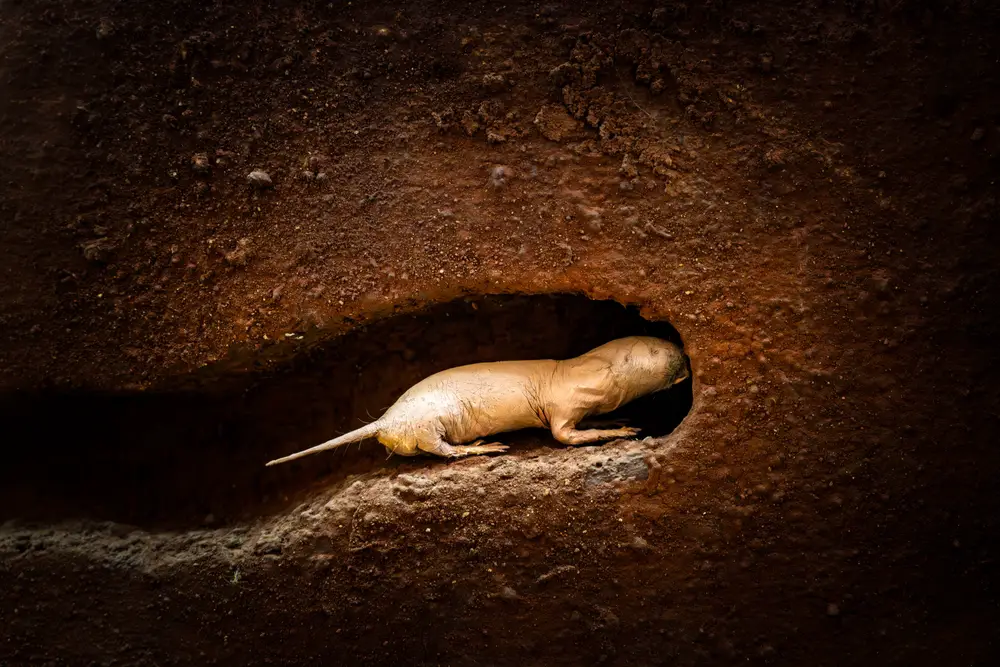
The naked mole-rat, with its wrinkly, hairless skin and prominent teeth, isn’t winning any beauty contests, but it sure is winning at life. Found in the deserts of East Africa, this creature is one of the few mammals that exhibit eusociality, similar to bees and ants. Living in colonies governed by a queen, naked mole rats are fascinating for their complex social structure and unique biology, according to the Smithsonian’s National Zoo. They are also incredibly resilient, with a remarkable resistance to cancer and the ability to survive without oxygen for extended periods.
Their appearance might not win you over at first glance, but naked mole-rats are nothing short of extraordinary. Their longevity and resistance to diseases could hold keys to scientific breakthroughs in human medicine. These remarkable rodents teach us that sometimes the ugliest packages contain the most extraordinary gifts.
4. The Star-Nosed Mole: Nature’s Little Alien
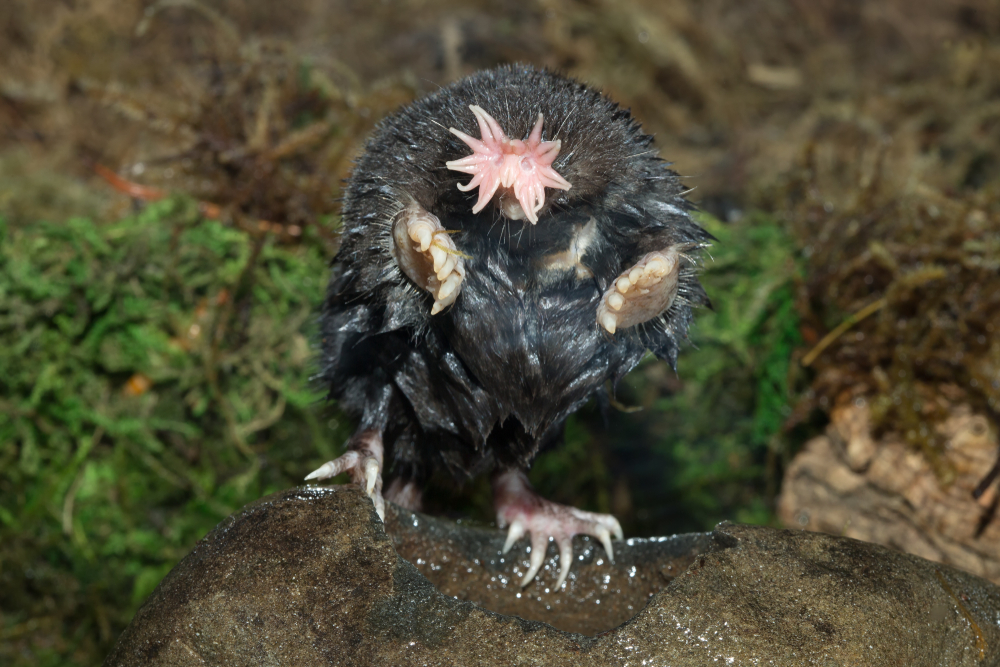
The star-nosed mole is a small mammal native to the wetlands of eastern North America, and its appearance is nothing short of otherworldly. Its most distinctive feature is its nose, which is adorned with 22 fleshy appendages called tentacles. These tentacles are incredibly sensitive and allow the mole to detect its prey with astonishing speed—often as fast as 120 milliseconds! Despite its odd looks, the star-nosed mole is a marvel of evolution, perfectly adapted to its environment.
Beneath its peculiar exterior lies a creature capable of feats that few other mammals can match. The star-nosed mole is an excellent swimmer and can even smell underwater, using its blowhole-like nostrils to capture air bubbles. Its ability to hunt and navigate through wet, muddy environments is unrivaled, making it a formidable predator in its niche. While it might not win any beauty awards, the star-nosed mole is a testament to nature’s incredible ingenuity.
5. The Proboscis Monkey: Big Nose, Bigger Personality
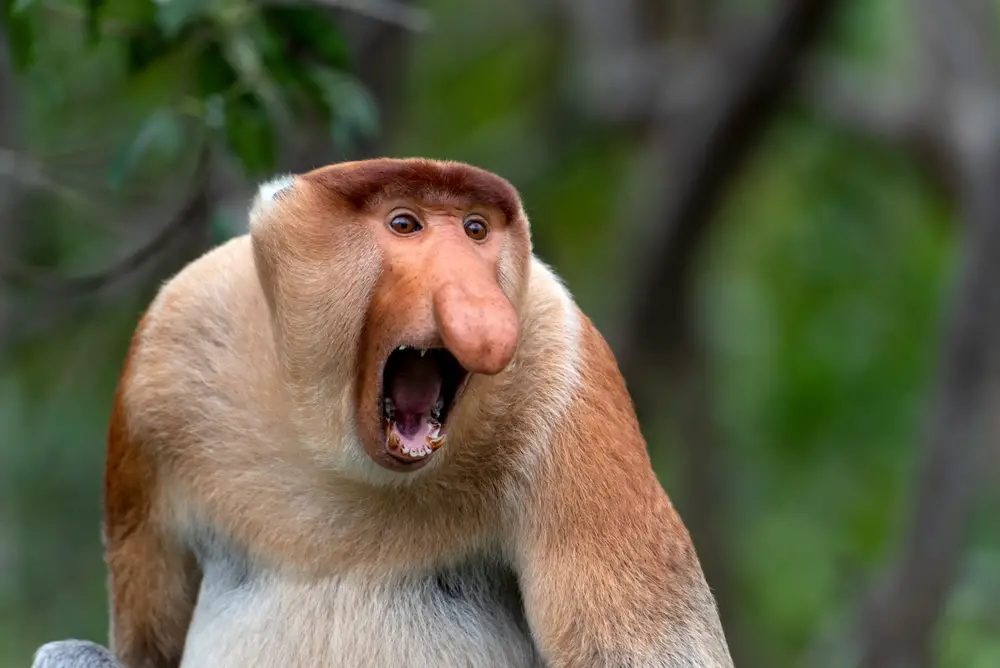 provided by Shutterstock
provided by Shutterstock
With a nose that rivals Pinocchio’s, the proboscis monkey is hard to miss. Native to the rainforests of Borneo, these monkeys use their large, pendulous noses to amplify calls and attract mates. Their distinctive appearance, with a potbellied physique and reddish-brown fur, makes them one of the most recognizable primates. Despite their comical looks, proboscis monkeys are highly skilled swimmers, often seen leaping from tree branches into rivers with ease.
While their noses might seem humorous to us, they play an essential role in the monkeys’ social structure and communication. Proboscis monkeys live in troops, where the males’ noses help assert dominance and deter rivals. Unfortunately, these remarkable creatures are endangered due to habitat loss and hunting. Efforts are underway to preserve their rainforest homes and ensure their survival for future generations. Their story reminds us of the importance of conservation and the beauty of biodiversity.
6. The Warty Frogfish: A Master of Disguise
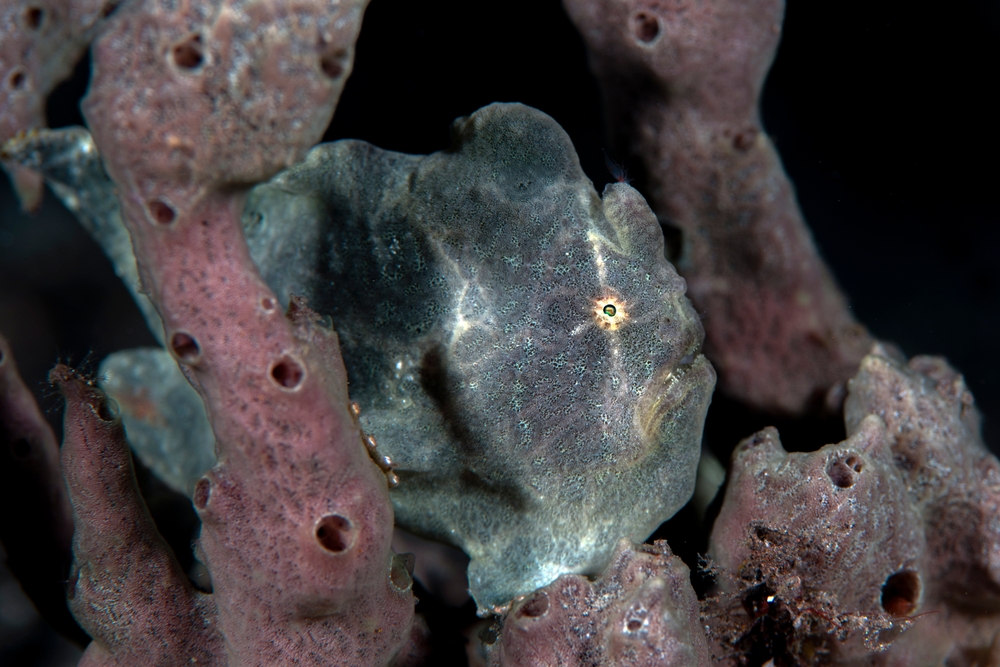
The warty frogfish is an undersea master of disguise, with an appearance that can only be described as bizarre. These fish boast a body covered in wart-like bumps and an array of colors and patterns that help them blend seamlessly into coral reefs. They use a specialized lure on their heads to attract prey, making them both hunters and masters of camouflage. Found in tropical and subtropical oceans, the frogfish’s odd appearance serves a vital purpose in its survival strategy.
While they may look odd, warty frogfish are incredibly efficient predators, capable of ambushing their prey with lightning-fast strikes. Their ability to change color and texture adds to their mystique, confusing even the most observant underwater photographers. Though frogfish might not win a beauty contest, they capture the imagination with their quirky adaptations. Their unique lifestyle is a reminder of the incredible diversity of life hidden beneath the ocean’s surface.
7. The Shoebill Stork: A Dinosaur in the Marshes
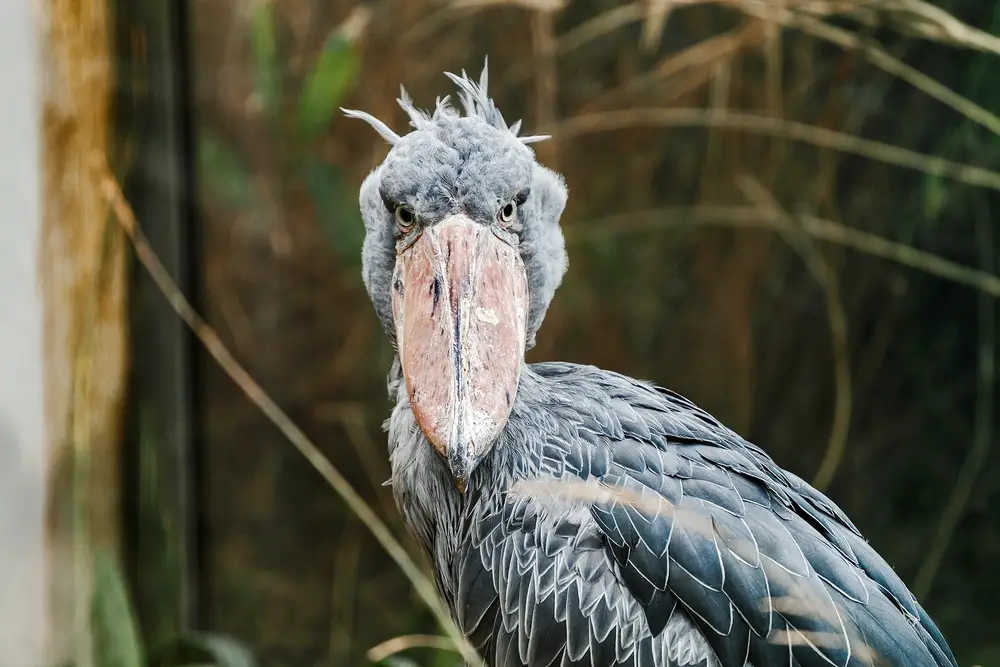
With its massive bill and prehistoric appearance, the shoebill stork looks like a relic from the age of dinosaurs. Native to the swamps and marshes of East Africa, this bird is as fascinating as it is peculiar. Its large beak is perfectly adapted for catching fish, frogs, and even small crocodiles, contributing to its fearsome reputation. Despite its intimidating look, the shoebill stork is known for its calm demeanor and patient hunting style.
The shoebill’s appearance is deceptive—while it looks imposing, it is a solitary and often peaceful creature. Watching a shoebill hunt is like seeing a master craftsman at work, using stillness and precision to catch its prey. Unfortunately, their wetland habitats are under threat from human activities, making conservation efforts critical for their survival. By protecting these marshy ecosystems, we ensure that this living link to the past continues to grace our planet.
8. The Matamata Turtle: The Master of Camouflage
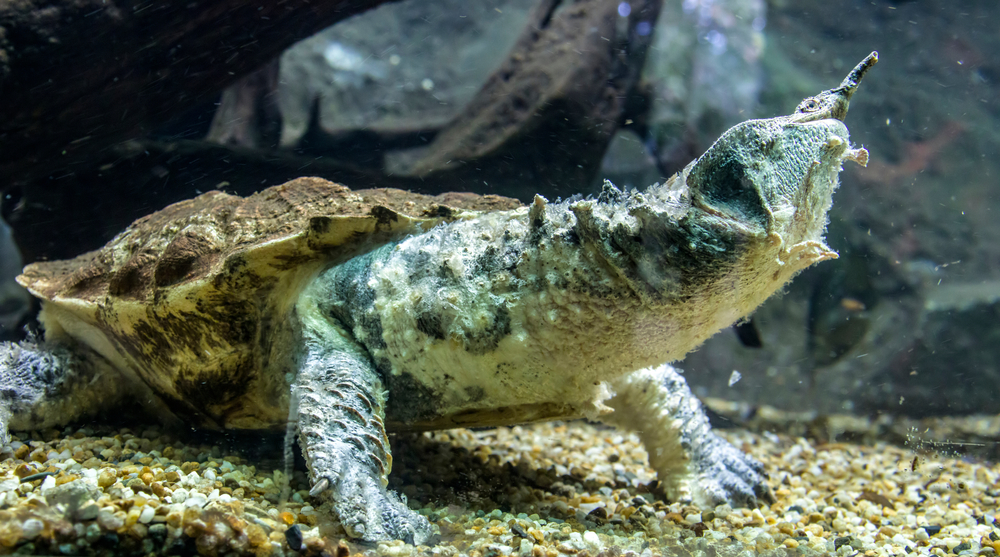
The matamata turtle, with its leaf-like shell and elongated neck, is a true master of disguise. Native to the slow-moving rivers and streams of the Amazon and Orinoco basins, its appearance mimics the debris and vegetation found in its habitat. This remarkable camouflage allows it to remain virtually invisible to both predators and prey. Its hunting strategy is just as unique, using its wide mouth to create a vacuum that sucks in unsuspecting fish.
Despite its odd looks, the matamata turtle plays an essential role in its ecosystem, controlling fish populations and maintaining the balance of its aquatic habitat. Its unusual appearance has made it a subject of fascination for herpetologists and nature enthusiasts alike. While it might not be the prettiest turtle on the block, the matamata’s extraordinary adaptations are a testament to the wonders of evolution. Its leaf-like appearance and stealthy hunting tactics make it a true marvel of the animal kingdom.
9. The Tarsier: The Big-Eyed Wonder
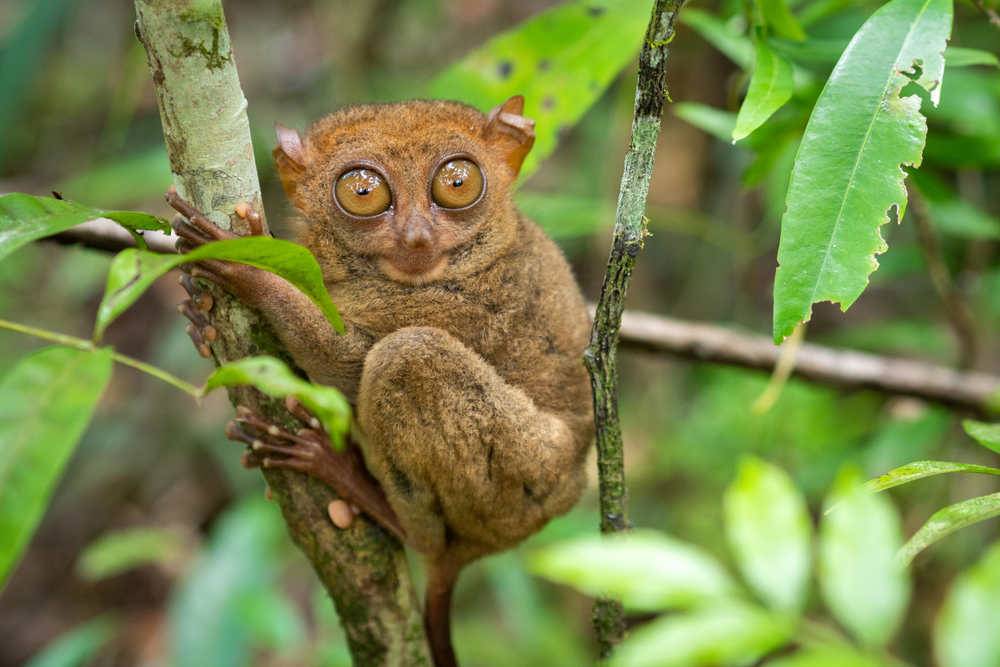
The tarsier, with its enormous eyes and tiny body, is a primate that seems almost cartoonish in appearance. Native to Southeast Asia, these small creatures are nocturnal hunters, using their sizable eyes to see in low-light conditions. Their long fingers and toes allow them to grip and leap between trees with incredible agility. Tarsiers are known for their unique form of communication, producing high-pitched calls that can travel long distances through dense forests.
Despite their unusual looks, tarsiers are vital to their ecosystems, controlling insect populations and contributing to the biodiversity of their habitats. Sadly, habitat loss and the illegal pet trade threaten their survival, prompting conservationists to take action. By raising awareness and protecting their natural environments, we can help ensure that these fascinating creatures continue to thrive. The tarsier’s oversized eyes and nimble movements make it a captivating symbol of the jungle’s rich biodiversity.
10. The Ocean Sunfish: The Gentle Giant of the Sea
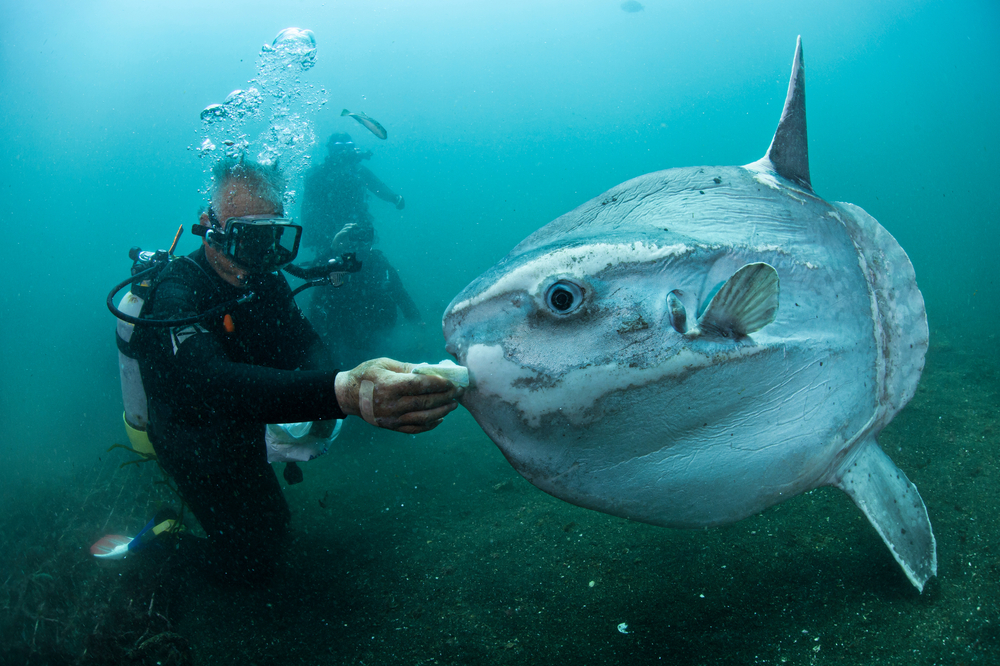
The ocean sunfish, or mola mola, is one of the heaviest bony fish in the world, with an appearance that is as peculiar as its size. Its flattened body and truncated fins give it a unique shape that resembles a swimming head. These gentle giants are found in temperate and tropical oceans worldwide, often swimming near the surface. Despite their awkward appearance, ocean sunfish are graceful swimmers, gliding through the water with surprising ease.
While their looks might be unconventional, ocean sunfish play a crucial role in marine ecosystems by controlling jellyfish populations. They are known to bask in the sun at the ocean’s surface, a behavior that has endeared them to divers and marine enthusiasts. Unfortunately, ocean sunfish often fall victim to fishing nets and marine debris, making conservation efforts essential for their survival. Their gentle nature and quirky appearance highlight the ocean’s incredible diversity and the importance of protecting it.
11. The Saiga Antelope: A Survivor of the Steppe
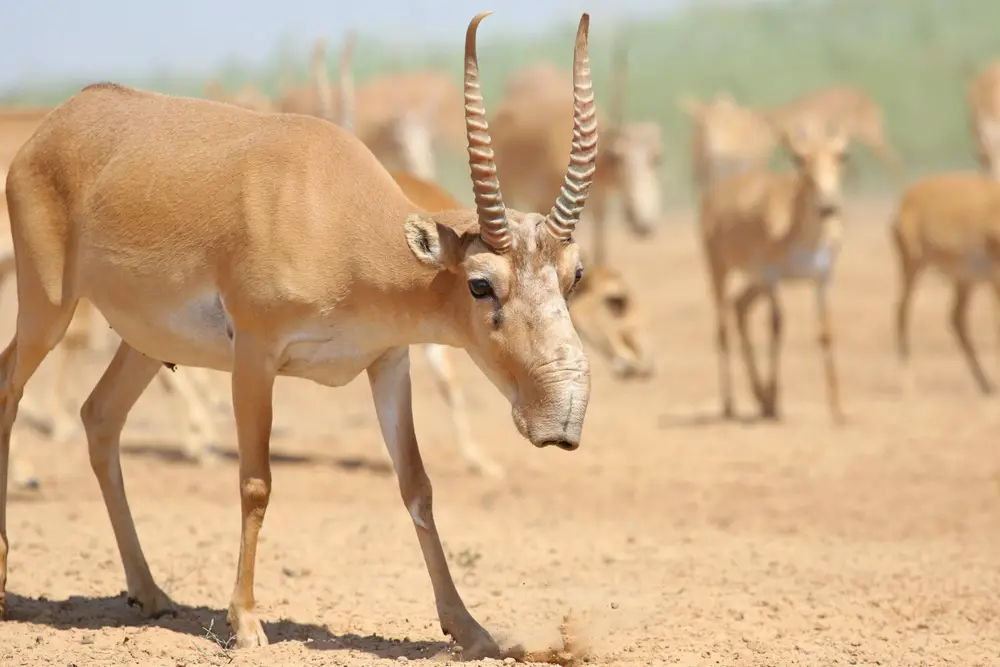
The saiga antelope, with its bulbous nose and slender legs, is a truly unique inhabitant of the Eurasian steppes. Its distinctive nose, which resembles a small trunk, helps filter dust and regulate temperature, allowing it to thrive in harsh environments. Saiga antelopes are migratory animals, covering vast distances across grasslands in search of food and water. Despite their resilience, these remarkable creatures face significant challenges due to habitat loss and poaching.
The saiga’s unusual appearance has made it a symbol of the steppe’s fragile ecosystem. Conservationists are working tirelessly to protect the remaining populations and restore their habitats. By supporting these efforts, we can help ensure the survival of this extraordinary species. The saiga antelope’s unique adaptations and tenacity make it a fascinating subject for wildlife enthusiasts and a reminder of the complexity of nature’s designs.
12. The Red-Lipped Batfish: A Fashion Icon of the Ocean Floor
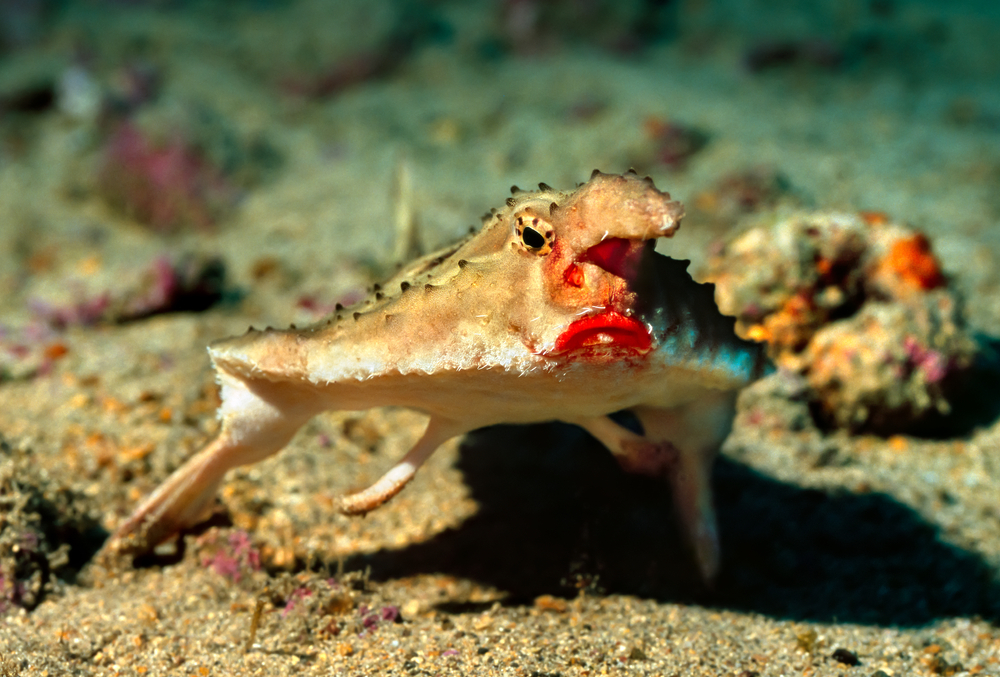
The red-lipped batfish, with its bright red lips and strange body shape, is a fish that could rival fashion icons. Found around the Galapagos Islands, this fish uses its modified fins to “walk” along the seabed rather than swim. Its vibrant lips are thought to play a role in attracting mates, making it one of the ocean’s most flamboyant creatures. Despite its odd appearance, the red-lipped batfish is a master at navigating the ocean floor.
While its looks may be deceiving, the red-lipped batfish’s adaptations are perfectly suited to its benthic lifestyle. It feeds on small invertebrates and fish, using its specialized body to maneuver through its environment. The batfish’s distinctive appearance has made it a favorite among divers and marine photographers. Its unique lifestyle and colorful lips remind us that the ocean is full of surprises and that beauty can be found in the most unexpected places.
